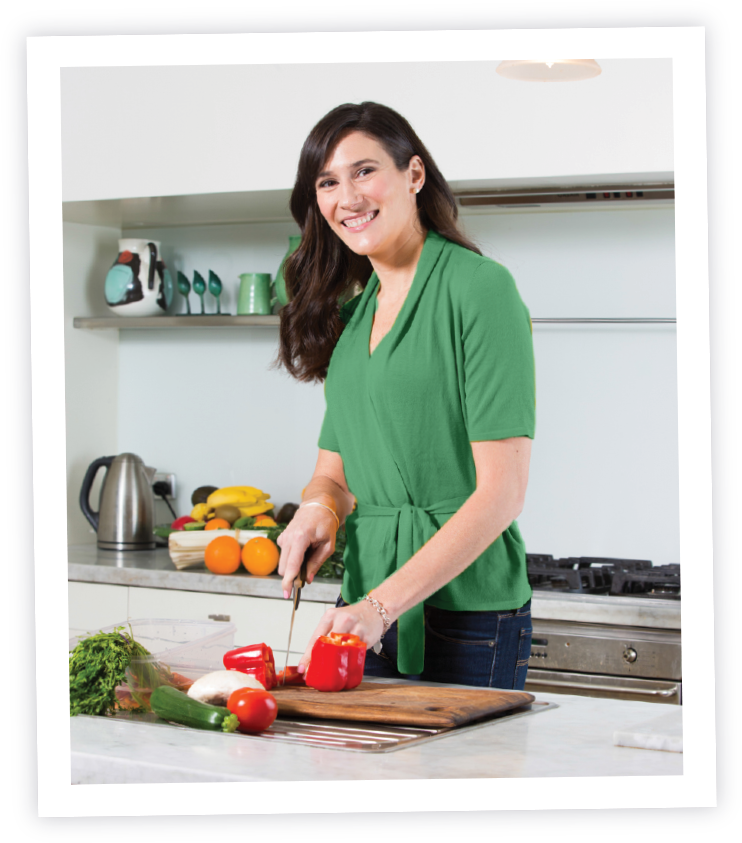
Have you heard of the low FODMAP diet but not sure what it actually entails?
We had a chat to our client Sophie, who was recently put on a low FODMAP diet to try to solve her tummy woes.
So tell us about your symptoms that lead to you going onto a low FODMAP diet?
At the start of the year I had a bad bout of food poisoning while overseas, I used Imodium to stop the diarrhoea in the short term, but the diarrhoea continued once I had returned home 3 weeks later, as well as stomach cramps and really awful flatulence! I went to my GP who tested for parasites, and I came back positive with Giardia Lamblia, a parasite of the bowel. I did a round of strong antibiotics, making sure that I took probiotics at the end of the course to recolonise my good gut bacteria. This cleared the parasite, and the next test came back negative. However, I continued to suffer gut symptoms. I would feel bloating after eating, stomach cramps and constipation, as well as flatulence. I thought I may be lactose intolerant, so cut out dairy, but then realised I was reacting to black coffee, as well as many fruits and meals such as pasta, cereal, curries and even my favourite roast vegetables. I couldn’t put my finger on what was causing all the pain!
That sounds awful! So how did you go about finding an answer to your gut issues?
I went to my GP who referred me to get some further tests done.
What were the steps you had to take?
Once the GP had listened to all my symptoms, she referred me to go and get a Hydrogen/Methane Breath test. The test took 2 hours, and I went on 2 separate days to test for lactose intolerance initially, and then fructose and sorbitol malabsorption.
At the start of each test I did an initial baseline test, and then drank a sugar solution (either lactose, sorbitol or fructose). I then took a breath measurement every 15 to 20 minutes for about 2-3 hours.
It was explained to me that the amount of hydrogen and/or methane present in the breath can determine whether or not you are malabsorbing, or are intolerant to these sugars. The sugars that aren’t absorbed in the small intestine are fermented in the larger bowel by bacteria creating either methane or hydrogen. These gases are transported via the bloodstream to the lungs where they are then breathed out and can be measured.
My test results showed that I was intolerant to lactose, and also showed fructose malabsorption.
I was then referred to an Accredited Practising Dietitian who reviewed my diet and breath test results and put me on the Low FOMDAP diet.
So what did the Low FODMAP diet mean for you?
My Dietitian explained that FODMAPs (which stands for Fermentable Oligosaccharides, Disaccharides, Monosaccharides and Polyols) are a group of complex sugars that have been identified to be the leading cause of IBS due to malabsorption. IBS can result in symptoms that can include constipation, diarrhoea or alternating both, flatulence, cramps and pain and/or bloating.
The types of high FODMAP foods that I had to exclude were quite extensive and included onion, garlic, honey, legumes, milk and yoghurt, apple and watermelon.
The diet began and I had to cut out any foods that were listed in any of the high FODMAP groups for 6 weeks. My dietitian gave me a complete list of low FODMAP foods that I could consume. There are also a few APPs that I found helpful. In this strict phase I noticed an improvement in my symptoms, which was a relief after suffering with IBS for so long!
After the 6 weeks, I then had to re-introduce each food group one at a time to work out which foods my gut reacts to. I first introduced Polyols, and started by including a handful of mushroom with my dinner for 3 days, and recorded my symptoms. I then had to continue challenging high FODMAP foods into my diet to see if I had any reactions.
I found that I reacted to the Lactose in dairy foods, and also to onions, garlic and apple.
What are the challenges and benefits of the diet?
Initially it was really hard to give up many of my favourite foods. It is especially tricky when eating out or when cooking for the family. However I found that there are many resources available to guide you through with a plethora of fantastic low FODMAP recipes and books on offer, and my dietitian was a great support to guide me in the right direction.
While it was hard work and time consuming, challenging each FODMAP group allowed me to discover what I could tolerate and eat without any reaction, as well as what I need to limit.
For eating out, I found that the best places to go were restaurants and cafes that also catered to gluten free diets, as these places tend to be quite accommodating. A few other tips I noticed were to avoid sauces, and say no bread on the side.
Despite all the challenges, there are many benefits to this diet. While I still get the occasional cramp or episode of constipation, my gut symptoms have improved immensely! I now know to avoid large quantities of milk or yoghurt, as well as onion, garlic and apple. Although it doesn’t mean I have to completely cut them out of my diet. I still have the odd bit of onion when I eat out as Mexican food is one of my favourites; however I am just aware that for the next few days I may be slightly uncomfortable. Using less onion and garlic for cooking has also lead to me becoming much more creative in the kitchen with herbs and spices.
I would encourage anyone with IBS symptoms to head to their GP or Dietitian to see whether any of the FODMAP’s are affecting you. I can’t tell you how much of a difference it has made to my life now that my gut is much happier!

Get nutritious recipes
straight into your inbox!
Send your details now to receive Melanie’s recipes designed around a range of dietary needs including improved fertility, weight loss, general heath and wellbeing through improved nutrition. Receive the recipes specific to your needs.
As seen in






